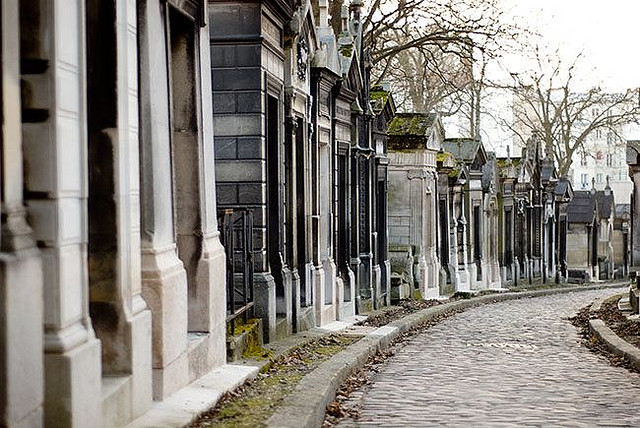Artists, adventurers, scientists, the rich and the poor, all of them are part of the history of Barcelona and they have a special place in two of the most important necropolis of the city: the cemeteries of Montjuic and Poblenou. Poblenou was the first cementary of the city. Its history reflects the changes that took place at the end of the 18th century and at the beginning of the 19th century.

The cemetery of Poblenou was divided into two sections. The first sections began to be built in 1775. The construction project of the Poblenou cemetery began thanks to the bishop of the city, who saw the need to create a cemetery, due to the fast changes in society and the problems that were emerging for public health because of the custom of burying the corpses in the churches of each neighborhood. By that time, the piece of land where the cemetery would be built was an agricultural sector, outside the walls of the city. Despite the fact that the new Spanish legislation established the construction of cemeteries far from the cities, the bourgeois population of Barcelona considered that being buried far from their own churches was dishonorable. For this reason, the first cemetery became the final resting place for the poorest and sickest people who had died in the hospitals. The second section of the cemetery was built after the destruction of the first section of the cemetery in 1819. The project was carried out by the Italian architect Antonio Ginesi. The modern section of the cemetery has been maintained up to the present day.
The Poblenou cemetery is nowadays divided into four zones that reflect the diversity and the history of the city. Some of the places that stand out due to their artistic value are: the pantheon pavilions, the chapel, the church of Santa María del Mar, the tomb of “El santet”, and of course, the most famous sculpture in the cemetery: the “Kiss of Death”.
The most important necropolis in Barcelona was inaugurated in 1883. Its creation was possible because of two important reasons: the necessity of a big cemetery where the historic and cultural wealth of the city could be admired and the rapid population growth. The architect who was in charge of the design and the distribution of the cemetery in the 56 hectares, that were designated by the Mayor Rius I Taulet, was Leandro Albareda, who managed to transform a mountainous and uneven piece of land, into a place full of harmony. The cemetery is more than just a cemetery; it is a reflection of the history of Barcelona and Catalonia from the beginning of the century up to the present day, since its construction has not stopped. It has been expanded and renovated as time goes by.
If you want to visit the cemetery of Montjuic by yourself, you cannot miss the pantheons of the most affluent families in the society of the beginning of the 19th century. Those pantheons were expected to reflect the social prestige of the deceased, even after death. Those are works of great value, which were designed by some of the most renowned artists of that time: Josep Puig, Cadalch, Lluis Domènech, Muntaner, Josep Llimona, etc. If you really want to explore both cemeteries, you should take a guided tour. You can choose from several guided tours, according to your tastes and your language. In the following link you can find more information:
For more information, visit: http://www.cbsa.es/
 Luz Obscura
Luz Obscura
Two spaces filled with art and history, a different way to learn about a society. If you plan to travel to Barcelona and get to know about its history, include in your itinerary a visit to the cemeteries of Montjuic and Poble Nou. Get your Barcelona accommodation and start a cultural tour that will surprise you.

 English
English Translated by: Hans
Translated by: Hans